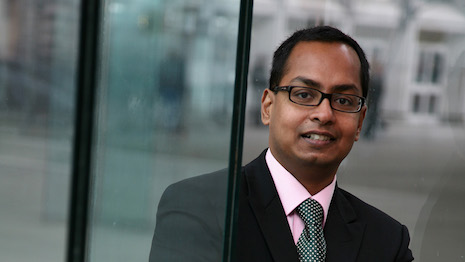 Ashok Som
Ashok Som
By Ashok Som Founder Estée Lauder was determined that no matter how much it grew, her company’s success would rely on a commitment of “Bringing the Best to Everyone We Touch.” The same philosophy has been guiding Estée Lauder Cos. (ELC) efforts in preserving natural resources and caring for the communities. As early as 1991, an environmental sustainability program was formally established. Then, as ELC’s portfolio of brands expanded, innovative ways of integrating corporate social responsibility (CSR) in their business were actively pursued. In 1992, Evelyn H. Lauder, senior corporate vice president of ELC, co-created the Pink Ribbon with Self Magazine and began The Estée Lauder Companies’ Breast Cancer Awareness (BCA) Campaign, which promotes the importance of early detection and raises funds to support breast cancer research. In 1994, the M·A·C AIDS Fund (MAF) was launched to provide vital services and strengthen the safety net for people living with and affected by HIV/AIDS through raising funds and delivering grants. Not to mention the Aveda Earth Fund (AEF), which has had the mission to protect the ecological and social well being of communities where Aveda has done business for more than 30 years now. Consumer drive Consumers soon seemed to acknowledge the brand’s efforts in CSR as they knew about the company’s activities and were even willing to participate in further initiatives. In an interview, Teresa Stanford-Danuzer, ELC vice president of global communications, stated that some had actually taken products to the counter saying that some of the extra packaging is a waste. To hear that clients would accept reduced packaging because they wanted Estée Lauder to stay true to their environmental positioning initiated further changes in the company. As of 2010, the conglomerate had not only become a leader in skin care products, but also in the world of CSR. It had lent its support to many organizations while committing itself to encouraging pollution prevention, resource conservation, waste minimization and recycling practices. Additionally, all products were now tested for allergy and irritancy in clinical trials that do not make use of animals. Making it strategic – in-house Last but not least, ELC had managed to involve its employees in the whole process through the Most Valuable People (MVP) Volunteer Program, which has grown considerably over the past 25 years and provides much-needed services in the areas of health, education and literacy, and for women in need. ELC’s team members serve as mentors or advisors, provide internships, speak on panels or in public schools, visit hospitalized children and their parents, and raise funds or awareness throughout the year. As stated in the Estée Lauder Corporate Social Responsibility Report 2010: “We encourage every employee, brand and function within our company to contribute to our sustainability and philanthropic efforts. Our dedication is both personal and professional. To us, that is the Beauty of Responsibility.” Ashok Som is professor of global strategy and chair of the management department at the ESSEC Business School, Paris. He is the co-author of "The Road to Luxury: The Evolution, Markets and Strategies of Luxury Brand Management," by Ashok Som and Christian Blanckaert, Wiley. He is also co-director of the ESSEC-Bocconi EMILux program. Reach him at [email protected]. Reproduced with permission and adapted for style.
